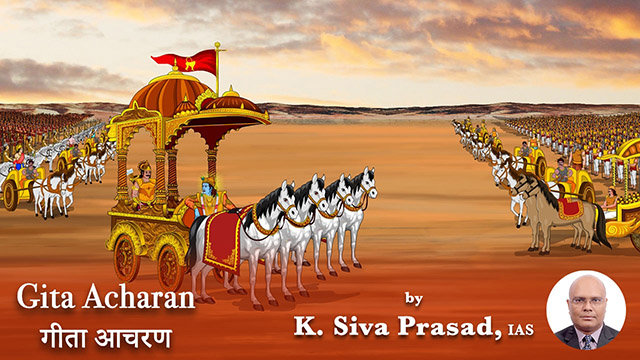
The seventh Chapter of the Bhagavadgita is called '𝙅𝙣𝙖𝙣𝙖-𝙑𝙞𝙜𝙣𝙖𝙣𝙖-𝙮𝙤𝙜𝙖' which can be interpreted as the understanding of manifested (𝙫𝙮𝙖𝙠𝙩𝙝𝙖) and un-manifested (𝙖-𝙫𝙮𝙖𝙠𝙩𝙝𝙖). Krishna gives two assurances in this Chapter. Firstly, once 'this' is known, nothing is left to be known (7.2) and secondly, if 'this' is understood even at the time of death still they attain ME (7.29).
Manifested (perishable) is eightfold (7.4) and un-manifested (eternal) is the life element which is beyond senses but supports the manifested like a string in an ornament of pearls (7.7). Manifested is under the influence of delusions caused by the three gunas(7.25); and by polarities of longing and aversion (7.27) which can be crossed by seeking refuge in HIM.
Science concludes that this entire universe (manifested) was formed from a single point and all we see around us is connected to that point which once held near infinite capacity. A similar analogy will hold for un-manifested as well where we are all connected to a single point (𝙥𝙖𝙧𝙖𝙢𝙖𝙩𝙢𝙖) of infinite capacity through an invisible cable. Delusions are a kind of resistance which prevents us from getting fully connected to this source. 𝙎𝙝𝙧𝙖𝙙𝙙𝙝𝙖 (7.21) is like conductivity which helps us connect ourselves to this powerful source that will help fulfil desires (7.22) as in the case of the four types of devotees (7.16). When one's 𝙨𝙝𝙧𝙖𝙙𝙙𝙝𝙖 is at a hundred percent, it's like superconductivity as Krishna says, "I consider them as My ownself' (7.18).
Gita is experiential and the best way to experience this chapter is to analyse past life experiences where we were under the grip of delusions. Once we understand delusions, we become 𝙨𝙖𝙠𝙨𝙝𝙞 (witness) when we encounter delusions in the present moment without getting affected. This is the eternal state of ultimate freedom (𝙢𝙤𝙠𝙨𝙝𝙖).

